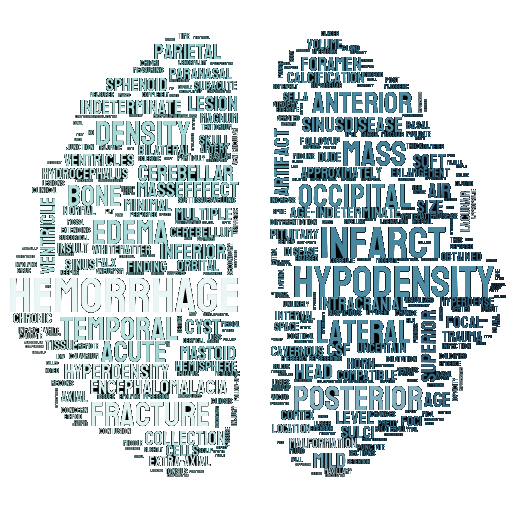
(brightness proportionate to frequency)
Hover for descriptions. Click for examples.
NeuroSearch
- Infarcts can be subtle. Use a "stroke" window and the clinical history.
- Look at the vessels which be hyperdense when thrombosed (veins or arteries). Aneurysms can sometimes be seen on CT without contrast.
- Masses can be isointense to brain - look for mass effect or what looks like "thick grey matter". Don't forget to examine the orbits, midline(pituitary and nasopharynx), bones, and extracranial soft tissues.
- Subdural hemorrhage can be difficult to see when small or isodense. Look for sulci displaced from the calvarium.
- White matter disease can be small, patchy or large, confluent. Remember everything is not microangiopathy - think about the clinical context.
- Look at the formen magnum for low cerebellar tonsils.
- Don't forget the sinuses and mastoids.























